

CAUTION — PLEASE READ CAREFULLY!
1) Always lock out machinery power switch before attempting removal or installation of chain.
2) Wear eye and face protection when grinding, driving or disassembling pins.
3) Always wear gloves, protective clothing and safety shoes with steel toe when working with heavy chain.
4) Make absolutely sure that chain is properly supported to prevent uncontrolled movement of chain and parts while assembling and disassembling.
5) Chain pressers and breaking tools are recommended and should be in good working order and used according to instructions.
6) Do not attempt to connect, disconnect or alter chain unless you are aware of the chain construction, including pin/rivet removal and the correct use of connecting links.
7) Chains made by different manufacturers should not be jointed together with MAXCO in the same application.
8) Never apply plating or welding to assembled chains or components.
9) Never fabricate damaged chains by replacing only the component parts.
10) Average Ultimate Strength of a chain is breaking load collected through a destructive tensile test. Never apply a working load over maximum allowable load.
CHECK LIST
Regardless of application, all chain systems should be periodically inspected on a regularly scheduled basis for worn, damaged or broken parts, possible interference by other system components, and proper lubrication. Normal maintenance procedures can prevent most of the conditions described below. Carefully inspect roller chain drives on the same schedule as associated equipment.
Sprocket Misalignment
Wear on the sides of sprocket teeth generally indicates improper installation of sprockets and/or shafts. If the shafts are out of parallel or not in the same plane, non-symmetrical wear will appear on sprockets or chain rollers.
MAINTENANCE: After proper alignment is made, re-tighten set screws in sprocket hubs.
Chain Wear and Elongation
Normal wear will cause some increase in chain length. However, if a sudden increase in elongation occurs, look for severe wear on the tips of sprocket teeth. May be caused by any of the following: excessive loading or shock loading, displacement and/or wear in bearings, displacement of take-ups, or under-designed drive. Elongation of 3% or more may be an indication that chain and/or sprockets should be replaced.
Before replacing chain or sprockets, recalculate initial drive design. Check chain tension if there is too much accumulated slack in the drive.
Broken Chain Parts
Generally caused by an overload drive, extreme misalignment, excessive elongation causing chain to jump sprocket teeth, heavy shock, improper drive design geometry, foreign objects.
Recalculate initial drive design and make necessary corrections. Inspect sprockets and shafts for proper alignment or looseness.
Link Plate Wear
Wear on edges of outer sides of outer link plate may be caused by chain contacting case or fixed object.
Remove or relocate fixed object. Readjust chain properly.
Excessive Noise
Can be caused by broken links and chain rollers, extreme misalignment, elongation, chain jumping sprocket teeth, loose sprockets, broken teeth, accumulation of dirt packed into the chain or sprocket teeth, interference by foreign objects, contacting a fixed object.
Check for worn, broken or missing parts. Check alignment of shafts and/or sprockets.
Excessive Vibration
Can be caused by unbalanced rotating parts, broken or missing rollers, too much chain slack, loose or misaligned sprockets or shafts.
Inspect chain and drive equipment. Replace or readjust as needed.
Improper Lubrication
Light or dark brown discoloration of pin-bushing joints and connecting link pins, or brown-red-oxide color in oil may indicate chain is not dipping into the oil reservoir, or drip lubricator or spray is plugged.
Carefully clean and dry chain, immerse in oil, and re-install. Change oil in chain case and flush case. Determine that oil supply is adequate or unimpeded.
Recommended Replacement
Chain parts should never be altered or tampered with by makeshift repairs and/or with parts or components which have not been authorized by the company.
Removing Chain
Turn the drive until a connecting link is fully engaged with one of the sprockets so as to relieve the tension on the connecting link pin. The connecting link may then be removed.
Cutting Riveted Chain
The two pins of a pin link must be driven out of the link plate. Strike the pins alternately to avoid distortion of the roller link plates as well as the plates of the adjacent links.
Inserting New Links
Chain and/or related parts should be visually inspected for damage which could have occurred during shipment prior to installation. Never install on badly worn sprockets as this will permanently damage the chain. As a temporary expedient, reverse a worn sprocket on the shaft to present a new set of working tooth surfaces; worn sprockets should be replaced as soon as practical to avoid permanent damage.
Periodic Cleaning
Remove chain from sprockets and wash in kerosene. If chain is badly gummed, soak in kerosene and re-wash in fresh liquid. Drain off kerosene and soak chain in oil to restore lubrication. Drain off excessive lubrication by hanging chain. Carefully inspect entire chain before reinstalling. Sprockets should be washed in kerosene.
Storing Chain
When roller chain is taken out of operation for a prolonged period, remove the chain and cover with heavy grease. Wrap in heavy grease-resistant paper and store where the chain will not be exposed to abnormal moisture, temperature, abrasive or corrosive conditions. Sprockets remaining on shafts should be covered with heavy grease. When the drive is put back in service, remove the grease and thoroughly clean sprockets and chain before re-installing.
Heating and Welding
Do not apply heat to chain by cutting torch unless absolute necessary. If cutting by torch is indicated, chain should be replaced. Welding should not be performed on any chain or chain components.